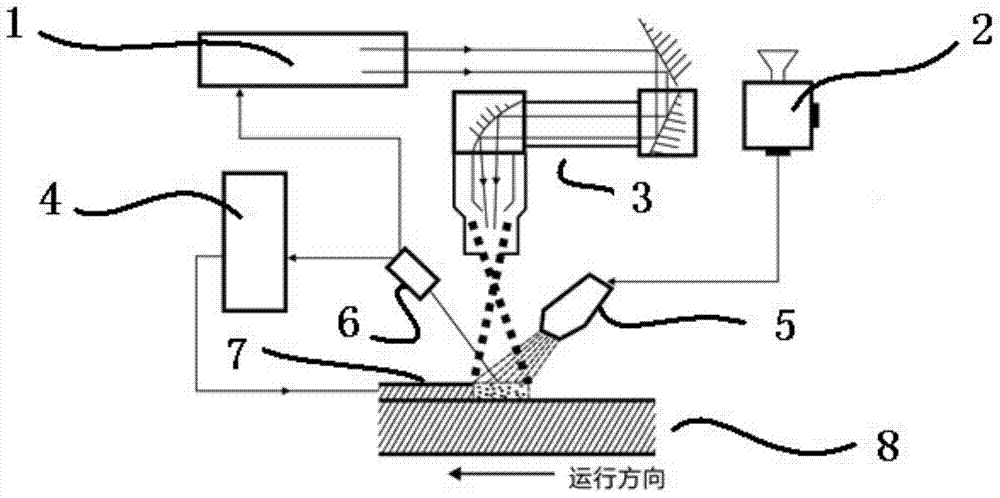Repairing method of cracks on roll surface of back-up roll of rolling mill
A repair method and technology for supporting rollers, which are applied in coating and metal material coating processes, etc., can solve the problems of secondary cracking and poor repair effect, achieve small grinding amount, increase cladding quality, and improve high energy distribution. The effect of inhomogeneity
- Summary
- Abstract
- Description
- Claims
- Application Information
AI Technical Summary
Problems solved by technology
Method used
Image
Examples
Embodiment 1
[0036] A method for repairing cracks on the surface of the backing roll of a rolling mill figure 1 Shown), including:
[0037] (A) Crack pretreatment
[0038] Remove the crack defect area on the roller surface;
[0039] Use magnetic particle inspection, X-ray inspection, fluorescent inspection or display inspection method to detect the crack defect. Confirm whether there is hydrogen embrittlement, cracking or internal cracking tendency.
[0040] (B) Repair
[0041] Use nickel-based alloy powder to cladding the area to be repaired through a laser. Equipment: 3000W high-power all-solid-state laser. When cladding, pay attention to metallurgical defects such as uniform, continuous, no cracks and pores in the cladding layer.
[0042] Carry out vibration aging treatment, equipment: automatic vibration aging device. The vibrator causes resonance and uses 200Hz low-frequency vibration to excite molecular activities, displace the grain boundaries in the metal, and release the stress in the cl...
Embodiment 2
[0052] A method for repairing cracks on the roller surface of a supporting roll of a rolling mill, comprising:
[0053] (A) Crack pretreatment
[0054] Remove the crack defect area on the roller surface;
[0055] Use magnetic particle inspection, X-ray inspection, fluorescent inspection or display inspection method to detect the crack defect. Confirm whether there is hydrogen embrittlement, cracking or internal cracking tendency.
[0056] (B) Repair
[0057] Use nickel-based alloy powder to cladding the area to be repaired through a laser. Equipment: 3000W high-power all-solid-state laser. When cladding, pay attention to metallurgical defects such as uniform, continuous, no cracks and pores in the cladding layer.
[0058] Carry out vibration aging treatment, equipment: automatic vibration aging device. The vibrator causes resonance and uses 200Hz low-frequency vibration to excite molecular activities, displace the grain boundaries in the metal, and release the stress in the cladding l...
PUM
 Login to View More
Login to View More Abstract
Description
Claims
Application Information
 Login to View More
Login to View More - R&D
- Intellectual Property
- Life Sciences
- Materials
- Tech Scout
- Unparalleled Data Quality
- Higher Quality Content
- 60% Fewer Hallucinations
Browse by: Latest US Patents, China's latest patents, Technical Efficacy Thesaurus, Application Domain, Technology Topic, Popular Technical Reports.
© 2025 PatSnap. All rights reserved.Legal|Privacy policy|Modern Slavery Act Transparency Statement|Sitemap|About US| Contact US: help@patsnap.com

